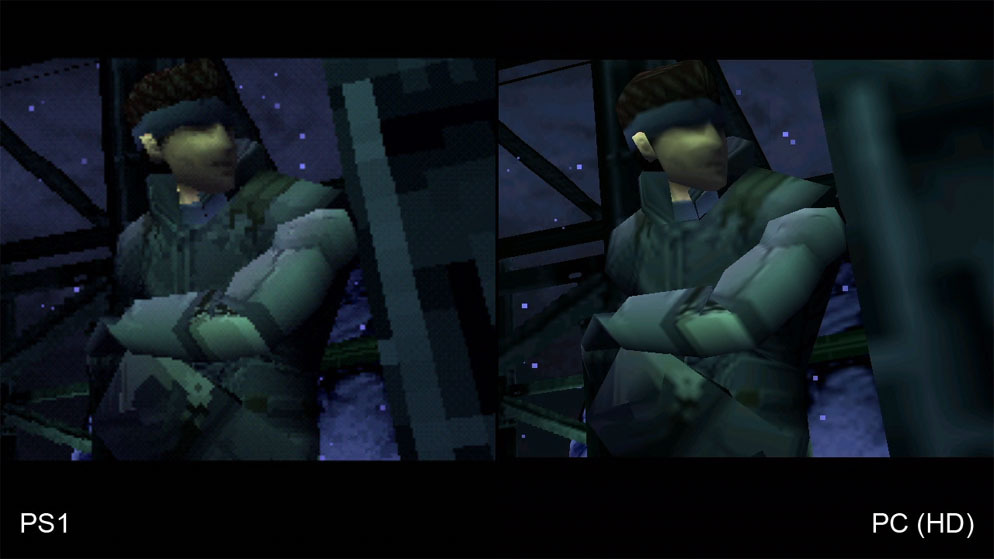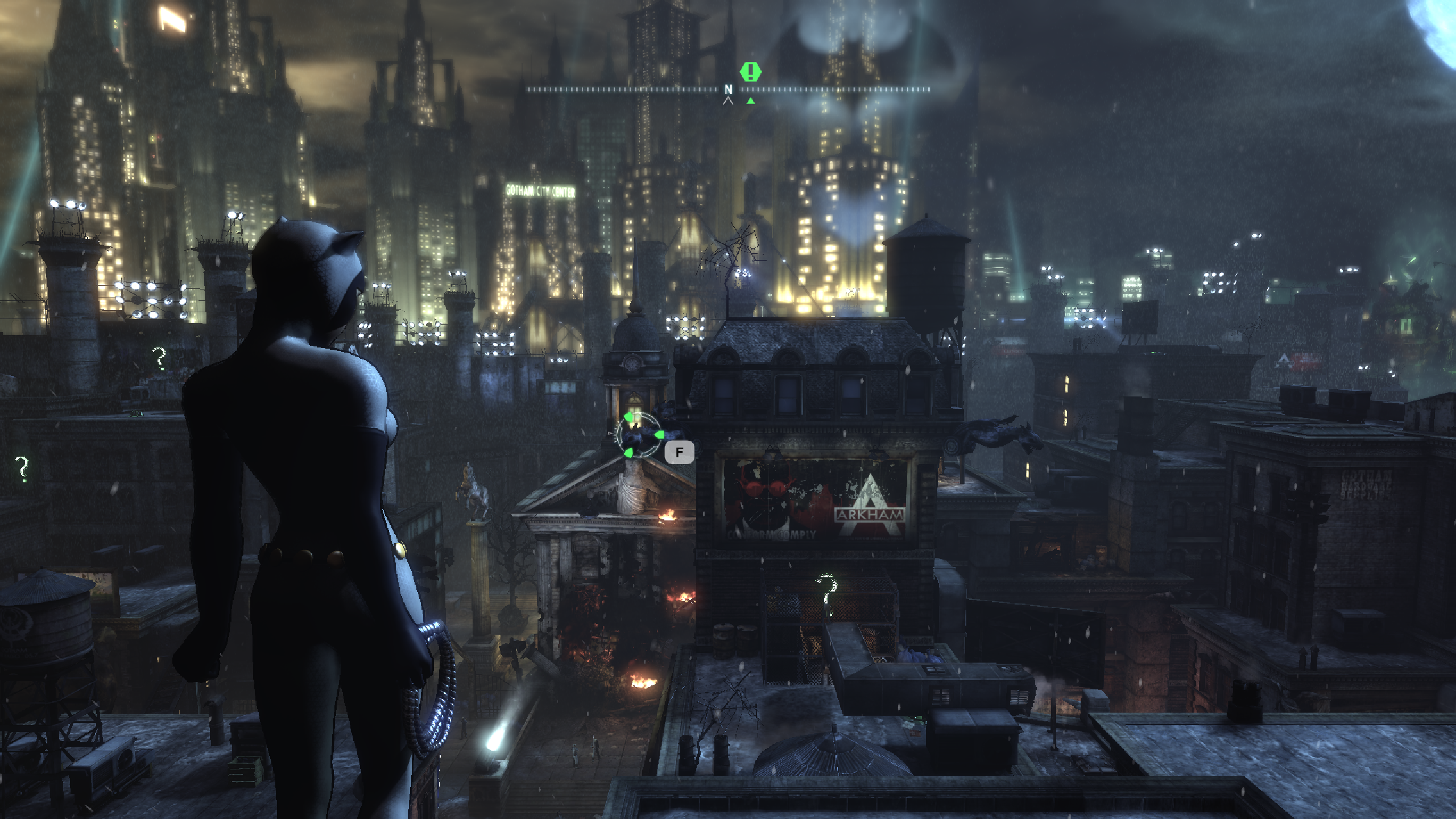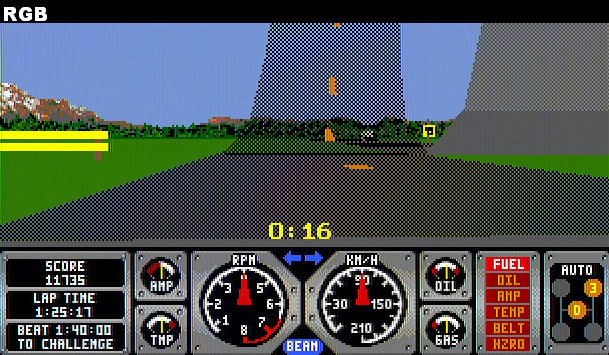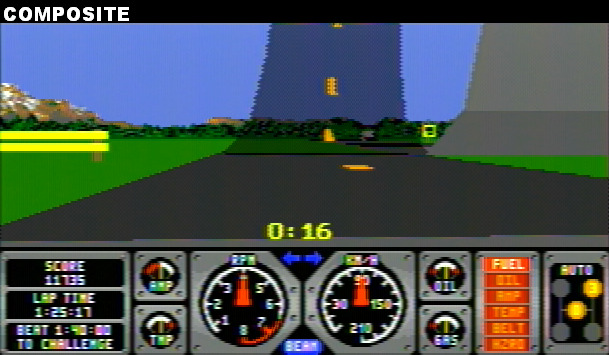Sir Abacus
Member
So, is there a way to get this sort of "grittier" look?
Bring down console, r_texturemode gl_nearest
Or just force 16x anisotropic filtering in the driver for it.
So, is there a way to get this sort of "grittier" look?
Depends on what you mean with "actual detail". What I'm talking about here are details like screws, nails, or other pixel-wide line where the edges between those objects and different parts of the texture are literally represented by the tiny difference in the pixel positions, which we use to interpret what we're looking at. The filtering process rather blends the information between those pixels, which in turn obfuscates the intended (conjecture as it might be on my part) result of the art. I think this comparison of Metal Gear Solid 1 very aptly illustrates this (unless the PC version for some reason has even lower res textures than the PS1 version resulting in even more blur than usual. I really don't know).

I've tested this many times.
Might be a bit better, but PS1 games still look awful in motion.
I agree 100% with lazygecko, PS1 games are better being run in their original resolution.
No it doesn't. It works very well on many games. Not perfect but far better than regular ogl2 which judders far more than og ps1 itself
It is game specific too. Pgxp does not work with all games and it breaks some games. It also only works with that one custom fork of pcsxr so if you tried it with a different emulator or different version of pcsxr it wasn't ever working.
I still think that it doesn't apply to newer games since at least the PS2 era. There may still be parts that look out-of-place at high resolutions, but it isn't down to texture filtering in these cases anymore. Many parts that look bad at high resolutions will still look bad at low resolutions. The main reason it looked better at the time is that we use sharper and much larger displays nowadays, making the flaws much more obvious.
Well yeah, when you view art assets at a higher resolution than they were ever intended to be viewed, the cracks in the facade become pretty apparent. No one was making sure their textures looked good at 1440p in 1995.


So this is a thing that does not exist then?I never knew I wanted an OS level global nearest neighbour upsampler for the desktop until this moment, but now I wonder how I can live without it.
So this is a thing that does not exist then?
EDIT: Also I do not even own Quake, was just using it as an example.
There are several tools which do this (DOSBox universally for all DOS games for example) but with Windows titles it can be tricky.
Is there reason this is not the way games are generally scaled? Dont that Im basically stuck with choosing 2K without dat blur.
You can disable bilinear filtering in any GLQuake, including the official one.
GUYS I DONT WANT TO PLAY QUAKE
This isn't even that new of a problem, for a much older example, numerous games would use dithering to fake transparency or color gradient effects with checkerboarding, and the high level of signal loss from RF and composite connections would effectively blend that all together.
Funnily enough, this image shows beyond any doubt that the PS1 version loses detail in the upper left corner: there is supposed to be a line there, but on the PS1 image it's just a few floating pixels.Depends on what you mean with "actual detail". What I'm talking about here are details like screws, nails, or other pixel-wide line where the edges between those objects and different parts of the texture are literally represented by the tiny difference in the pixel positions, which we use to interpret what we're looking at. The filtering process rather blends the information between those pixels, which in turn obfuscates the intended (conjecture as it might be on my part) result of the art. I think this comparison of Metal Gear Solid 1 very aptly illustrates this (unless the PC version for some reason has even lower res textures than the PS1 version resulting in even more blur than usual. I really don't know).

I think what you are getting at is the allusion of detail, inspired in your mind, vs actual detail right in your face (or lack of, eg. that horrible boring smoothness).
I remember reading an art essay over a decade ago, about detail and the suggestion of detail and how it activated the brain, and how clinical precise smoothness was boring and did the opposite. Makes sense with trends of pointillism or visible brush strokes. I really wish I could remember the concept or who wrote it.
But in the last year in the news there was the story about how looking at a forest/trees is much more pleasant and relaxing for the brain than looking at the interior of an office or a building. Is it the suggestion of something with 'infinite detail' that the brain finds pleasing?
Anway, interesting thread, and for the record would love to see something like Uncharted 4 hooked up to a HD CRT via some crappy input method.
Funnily enough, this image shows beyond any doubt that the PS1 version loses detail in the upper left corner: there is supposed to be a line there, but on the PS1 image it's just a few floating pixels.
So, if you want the sharp line in front but also accurate rendering in the back what you need is a high-resolution rendering with point sampling. Which should be easy enough to enforce.
Generally, the problem with low resolution rendering is spatial and temporal aliasing (flicker).
Well, what are you trying to play at 320x240?
Trying to play PS360 era games at 1080p or 720p without the blurring effects of scaling. Currently playing games at 2K with insane IQ and some games have an odd mismatch look to it. ie. The view is SO clear that its revealing a lot of things generally hidden with lower resolutions.
EDIT: Basically I want to choose what resolution to play games at with no blurring and zero performance issues.
Impossible, unless you want to play with black bars on all sides. Upscaling always introduces some amount of blur unless the higher resolution is exactly divisble by the lower one.
Also, what resolution is "2K" supposed to be exactly?
Trying to play PS360 era games at 1080p or 720p without the blurring effects of scaling. Currently playing games at 2K with insane IQ and some games have an odd mismatch look to it. ie. The view is SO clear that its revealing a lot of things generally hidden with lower resolutions.
EDIT: Basically I want to choose what resolution to play games at with no blurring and zero performance issues.
GUYS I DONT WANT TO PLAY QUAKE
Aaaaand why shouldnt it be possible to play them full screen at a resolution other than native without being a blurry mess?I hope you like playing in a window.
Just learn to accept those games as they are. All games are a product of their time.
Funnily enough, this image shows beyond any doubt that the PS1 version loses detail in the upper left corner: there is supposed to be a line there, but on the PS1 image it's just a few floating pixels.
So, if you want the sharp line in front but also accurate rendering in the back what you need is a high-resolution rendering with point sampling. Which should be easy enough to enforce.
Generally, the problem with low resolution rendering is spatial and temporal aliasing (flicker).
Aaaaand why shouldnt it be possible to play them full screen at a resolution other than native without being a blurry mess?


Now instead of being able to see some rough edges, everything literally has rough edges.

You're crazy if you think that looks better than this:

Trying to play PS360 era games at 1080p or 720p without the blurring effects of scaling. Currently playing games at 2K with insane IQ and some games have an odd mismatch look to it. ie. The view is SO clear that its revealing a lot of things generally hidden with lower resolutions.
EDIT: Basically I want to choose what resolution to play games at with no blurring and zero performance issues.
meant 1440p
Call me crazy, but this reads like "PC graphics are too sharp and angular".Aaaaand why shouldnt it be possible to play them full screen at a resolution other than native without being a blurry mess?
Call me crazy, but this reads like "PC graphics are too sharp and angular".
A lower resolution on a fixed display will typically use the GPU linear scaling, making it a bit softer than a 1:1 mapped pixel display. Even then, I am not sure why you would want to do that on a 1:1 mapped pixel display with modern games (say, 1280X720) as you would still see tons of aliasing. I honestly think the art in modern games since the 360 era does not even hold up at their original native resolutions, so I am not sure why lowering res would help really. It would just exaccerbate other problems .
OP, I am not sure your request works so well for things that were not made pre-1995 and used point sampled textures. Technically you could use GeDoSaTo and use a resolution switch and configure the type of scaling to your desire (linear, lanczos, bicubic).
Why is this not a valid opinion to have? Why can't I say a game built to be played in 720p or 1080p with 2XAA looks bad in 1440p with 4XMSAA?
City is not one of the games I have issue with which is why iI put "some" in the title. Some games just do not look good in 1440p when they were design for 720p and lower.
Why is this not a valid opinion to have? Why can't I say a game built to be played in 720p or 1080p with 2XAA looks bad in 1440p with 4XMSAA?
I guess I missed the part where you named some games, all I read was "PS360 era games at 1080p" and this was one such game I had installed.
This isn't even that new of a problem, for a much older example, numerous games would use dithering to fake transparency or color gradient effects with checkerboarding, and the high level of signal loss from RF and composite connections would effectively blend that all together.



On early 3D systems, effectively anything pre-Xbox 360, a lot of similar shortcuts were taken, especially things like 2D assets used which looked 3D, to cheat at the lower (240p or 480p) resolutions those games were expected to run in, and attempting to run them at higher resolutions like 1080p effectively only increases the resolution of the 3D elements and doesn't magically improve the 2D assets or textures, so things look uneven and almost broken/unfinished.
Dishonored and Binary Domain were the ones that stuck out to me
City is not one of the games I have issue with which is why iI put "some" in the title. Some games just do not look good in 1440p when they were design for 720p and lower.
Why is this not a valid opinion to have? Why can't I say a game built to be played in 720p or 1080p with 2XAA looks bad in 1440p with 4XMSAA?
-52.jpg)
Aaaaand why shouldnt it be possible to play them full screen at a resolution other than native without being a blurry mess?
Ocarina of Time is a good example, that HUD looks awful when it's upscaled. I think I'd rather just prefer to play the entire game at 320x240 (or what it was..)
EDIT: I realize OOT has many remakes, but still, you get my point.
-52.jpg)
Aaaaand why shouldnt it be possible to play them full screen at a resolution other than native without being a blurry mess?
Ocarina of Time is a good example, that HUD looks awful when it's upscaled. I think I'd rather just prefer to play the entire game at 320x240 (or what it was..)
EDIT: I realize OOT has many remakes, but still, you get my point.
-52.jpg)
I agree that 2D elements can get ugly.
But your example isn't complete without showing what it would look like at 320x240 (upscaled for a fair comparison of course):
Looks pretty ugly too, right? That's just the way the game is.
